
Roots
A quiet hum exists within the human experience, a subtle knowing that our earliest ways of being hold echoes of wisdom. For those with textured hair, this resonance often begins with the strands themselves, a physical connection to lineage and history. What if the simple gestures of ancestral hair care—the oils, the gentle hands, the shared moments—offer more than surface beauty?
What if they present a deeper, almost forgotten language for contemporary well-being? This exploration considers how traditional hair care practices can indeed inform and enrich modern health approaches, moving beyond mere aesthetics to touch upon physical vitality, mental calm, and even ecological harmony.

The Architecture of Textured Hair
To truly appreciate the insights offered by older hair care customs, a foundational understanding of textured hair’s unique biological makeup becomes essential. Textured hair, a term encompassing a spectrum from wavy to tightly coiled, carries distinct characteristics shaped by the follicle’s form. Unlike straight hair, which emerges from a round follicle, textured strands grow from an oval or elliptical follicle. This elongated shape dictates the strand’s tendency to curl or coil as it leaves the scalp.
This structural difference means textured hair often possesses fewer cuticle layers, making it more prone to dryness and breakage. The natural bends and turns along the hair shaft also create points where moisture can escape and where tangles might form more readily. Understanding these inherent qualities—the inclination toward dryness, the potential for fragility, the unique curl patterns—provides a lens through which to view traditional practices. Many historical methods, intuitively or through generations of observation, developed solutions that directly addressed these very characteristics, often before scientific explanations existed.
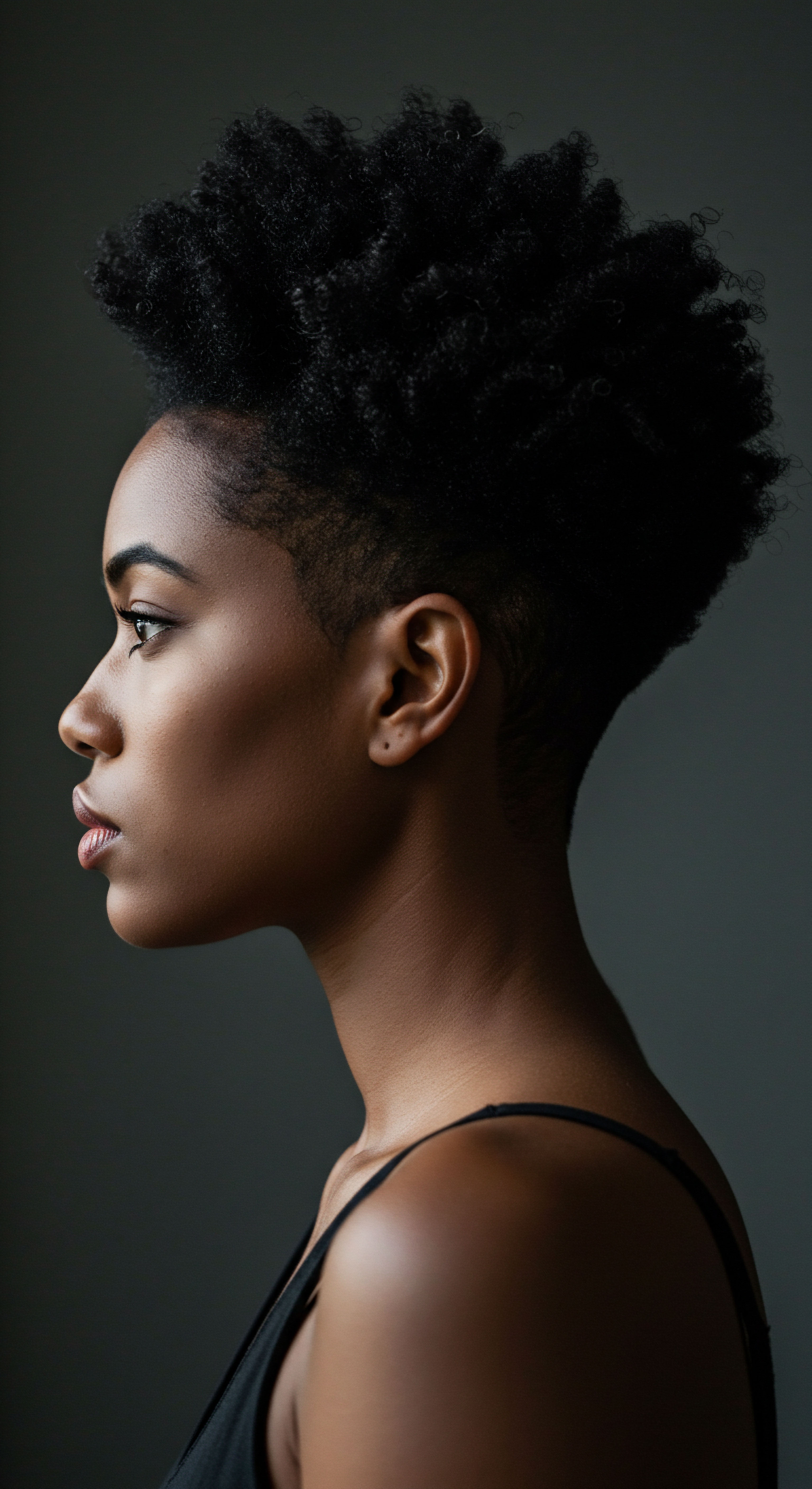
Hair Classification Systems
The world of textured hair recognizes various classification systems, serving as useful guides for individuals and professionals alike. The Andre Walker Hair Typing System, for instance, categorizes hair into four main types ❉ Type 1 (straight), Type 2 (wavy), Type 3 (curly), and Type 4 (coily). These types are further divided into subcategories (A, B, or C) based on the tightness of the curl or wave pattern. For example, 4C hair indicates a tighter coil than 4B hair.
Another system, like L’Oréal’s, classifies hair into eight categories, considering factors beyond just curl pattern, such as curve diameter and curl index, alongside kinking. While these systems offer a framework, individual hair can exhibit a combination of textures, making personal observation and adaptation paramount.
The intrinsic structure of textured hair, from its elliptical follicle to its varied curl patterns, lays the groundwork for understanding the ancient wisdom embedded in traditional care methods.
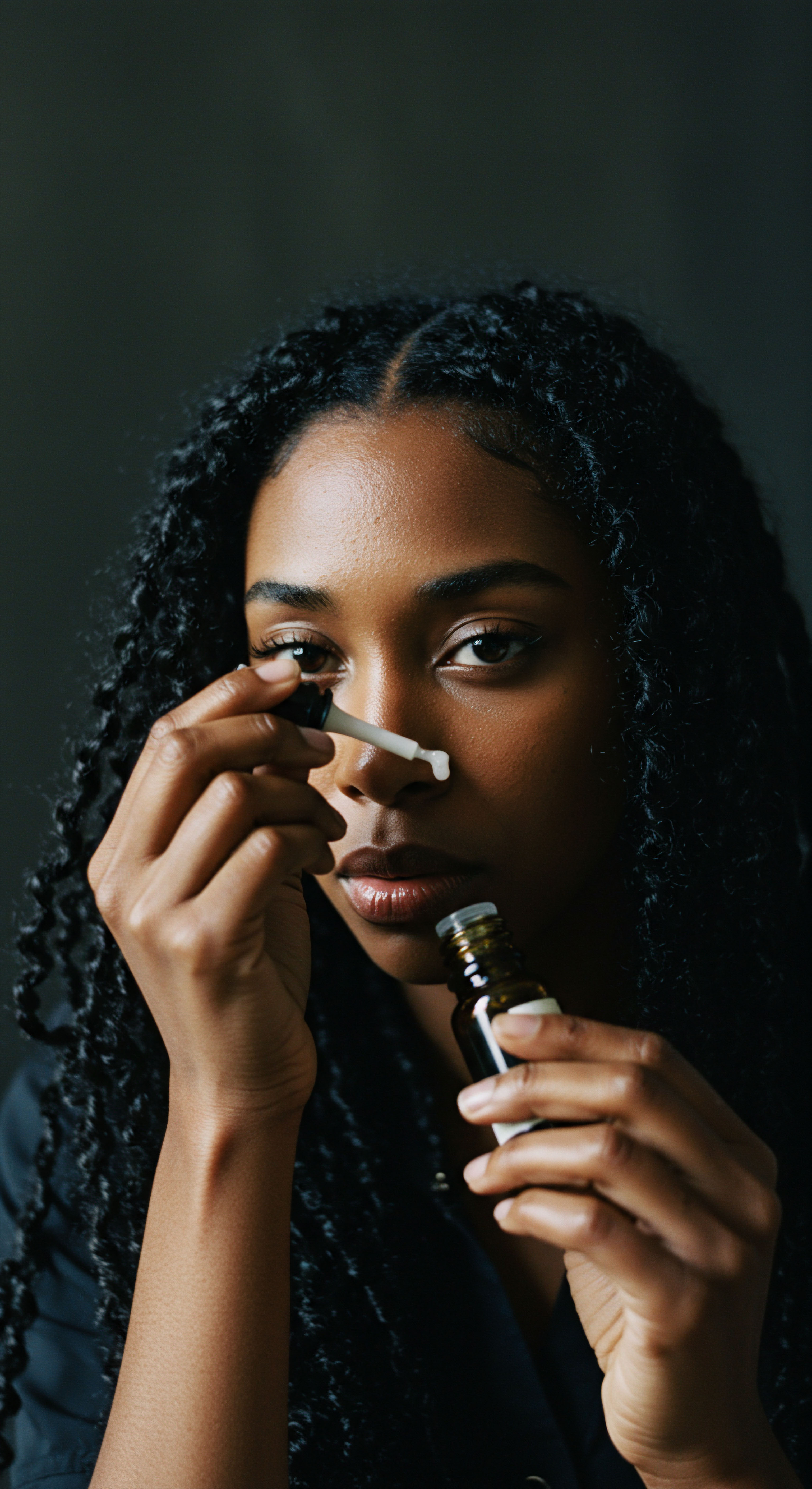
A Language for Strands
Every specialized area develops its own lexicon, and textured hair care is no different. Familiarity with specific terms helps articulate concerns and solutions with precision.
- Porosity ❉ This refers to how well your hair absorbs and retains moisture. Low porosity hair has tightly bound cuticles, resisting moisture entry, while high porosity hair has raised cuticles, absorbing moisture quickly but losing it just as fast.
- Density ❉ This describes the number of individual hair strands on your head. High density hair appears thick, while low density hair may seem sparse.
- Elasticity ❉ This is your hair’s ability to stretch and return to its original state without breaking. Healthy elasticity indicates strong hair.
- Coily Hair ❉ Characterized by tightly packed curls or zigzag patterns, often prone to shrinkage and dryness.
- Protective Styles ❉ Hairstyles that tuck away the ends of the hair, minimizing manipulation and exposure to environmental stressors, thereby reducing breakage.
These terms provide a shared understanding, allowing for a more informed discussion about hair health and the efficacy of different care practices, traditional or modern.
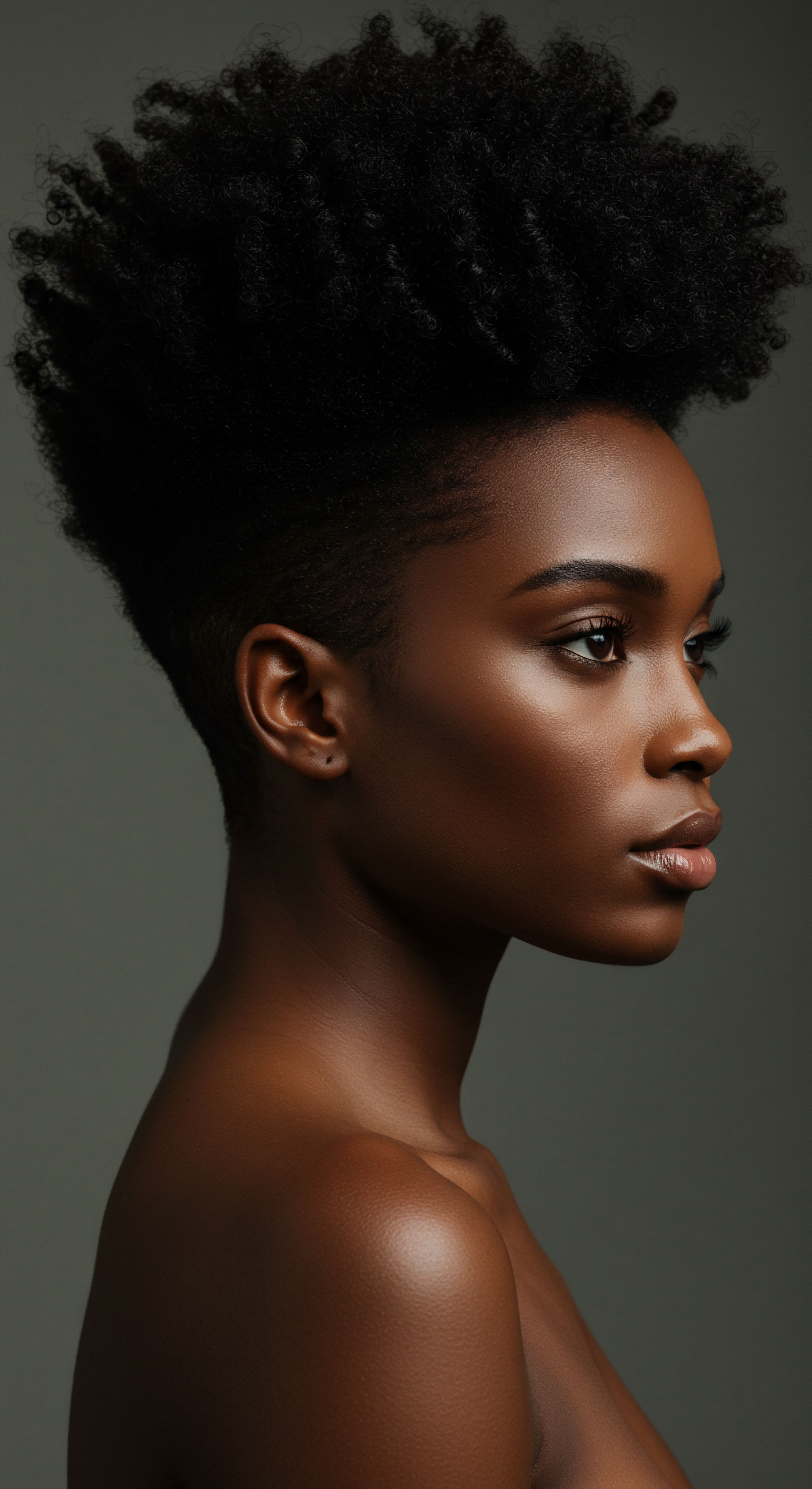
The Cycles of Hair Growth
Hair growth is a cyclical process, with each strand undergoing distinct phases:
- Anagen Phase ❉ The active growth phase, which can last for several years.
- Catagen Phase ❉ A transitional phase where hair growth slows and the follicle shrinks, lasting a few weeks.
- Telogen Phase ❉ The resting phase, typically lasting a few months, during which the hair is shed.
- Exogen Phase ❉ A sub-phase of telogen, where old hair sheds, making way for new hair to grow.
Factors such as genetics, nutrition, stress, and overall health significantly influence these cycles. Traditional health approaches, particularly those from Ayurvedic and Traditional Chinese Medicine (TCM), often consider the body’s internal balance as directly impacting hair growth and vitality.
For instance, in TCM, hair health is viewed as a reflection of blood health and the balance of Qi (vital energy). An abundance of healthy blood contributes to strong, full hair, while imbalances, such as excess heat in the blood, can lead to hair loss. Similarly, Ayurveda connects hair health to overall physical and mental balance, with specific doshas (Vata, Pitta, Kapha) governing bodily functions, and imbalances potentially affecting hair.
| Follicle Shape Round |
| Hair Type Straight |
| Common Characteristics Smooth, often shiny, less prone to tangles. |
| Follicle Shape Oval |
| Hair Type Wavy to Curly |
| Common Characteristics S-shaped waves or loose spirals, moderate frizz potential. |
| Follicle Shape Elliptical |
| Hair Type Coily |
| Common Characteristics Tight coils or zigzag patterns, prone to dryness and shrinkage. |
| Follicle Shape Understanding follicle shape aids in recognizing hair's inherent tendencies. |

Ritual
As we move from the elemental understanding of hair to its daily and periodic expressions, we step into the realm of ritual. The way we tend to our hair, the products we select, and the methods we apply are not simply chores; they are acts of attention, often deeply rooted in cultural memory. How can the deliberate, mindful actions embedded in traditional hair care rituals provide practical guidance for our contemporary routines? This section considers the application of historical wisdom, translating ancient techniques into practices that nourish textured hair today.

Protective Styles as a Shield
Across various cultures, protective styling has long served as a cornerstone of hair care. These styles, which tuck away the hair’s ends and minimize manipulation, offer significant benefits for textured hair, which is inherently more delicate and susceptible to breakage. Braids, twists, buns, and cornrows, often seen in African and African Diaspora traditions, are not just aesthetic choices; they are strategic maneuvers for hair health.
By limiting exposure to environmental aggressors like sun and wind, and by reducing daily combing and styling, these methods help retain moisture and prevent mechanical damage. The concept is straightforward ❉ less handling means less stress on the hair shaft, allowing strands to retain their length and strength. This wisdom, passed down through generations, finds its scientific backing in the reduction of friction and tension, leading to less hair loss and split ends.

An Encyclopedia of Protective Styles
- Braids ❉ Ranging from single braids to intricate cornrows, these styles keep hair secured close to the scalp or in controlled sections.
- Twists ❉ Two strands of hair wrapped around each other, offering a softer alternative to braids, often used for defining curl patterns.
- Buns and Updos ❉ Simple ways to gather hair, keeping it off shoulders and away from clothing friction.
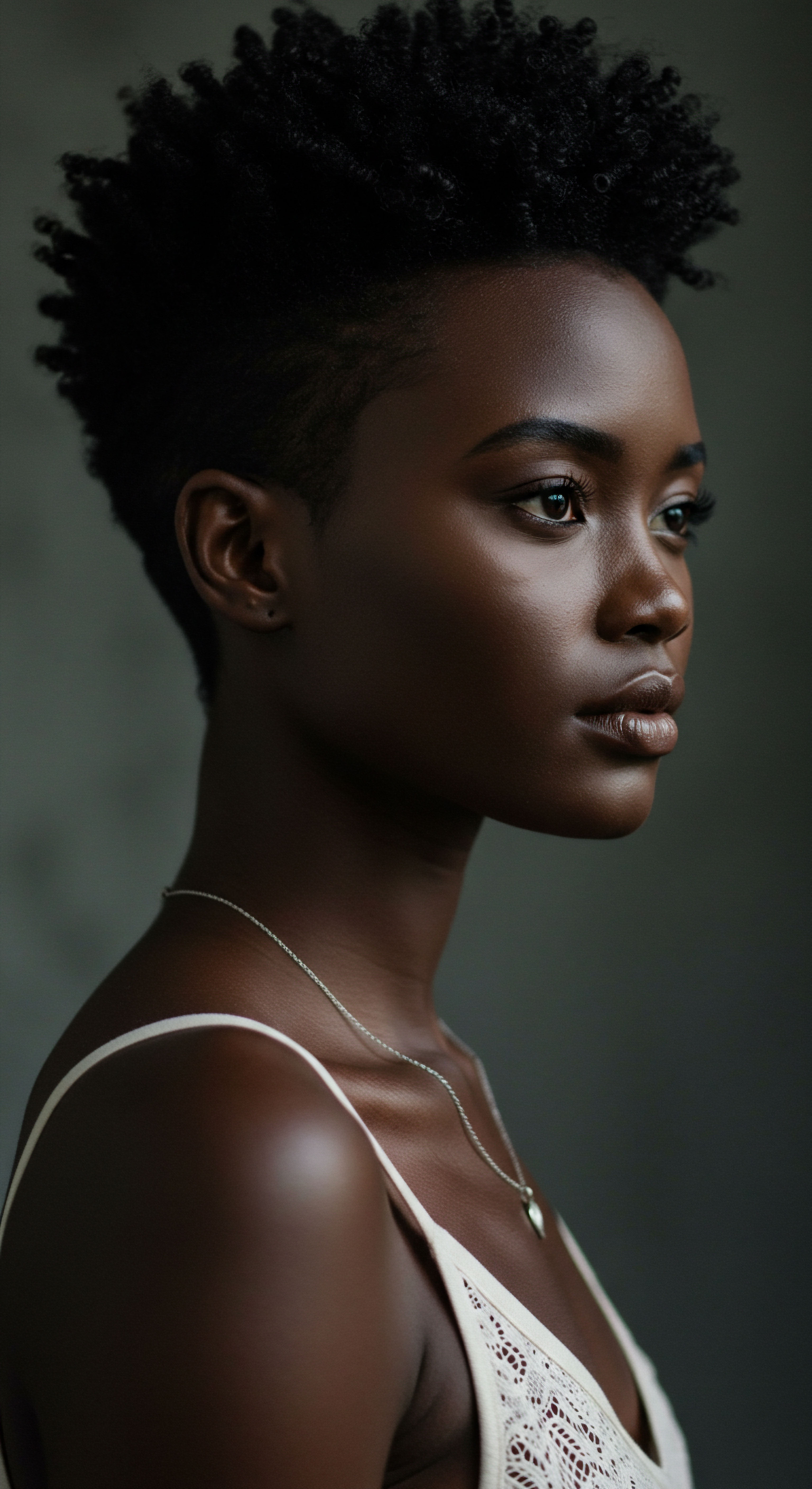
Defining Natural Patterns
The quest for defined curls and coils is a modern pursuit, yet traditional practices often achieved this through gentle, natural means. Rather than relying on harsh chemicals or excessive heat, ancestral methods frequently centered on nourishing ingredients and careful handling.
For example, the use of plant-based gels and oils, such as aloe vera in Latin American traditions or flaxseed gel, provided hold and moisture without rigidity. The emphasis was on working with the hair’s inherent curl, rather than forcing it into an unnatural shape. This approach celebrates the unique contours of each strand, promoting a relationship with hair that honors its natural state.
Traditional hair care rituals, often passed down through generations, offer a powerful template for modern routines, emphasizing gentle protection and natural definition over harsh manipulation.
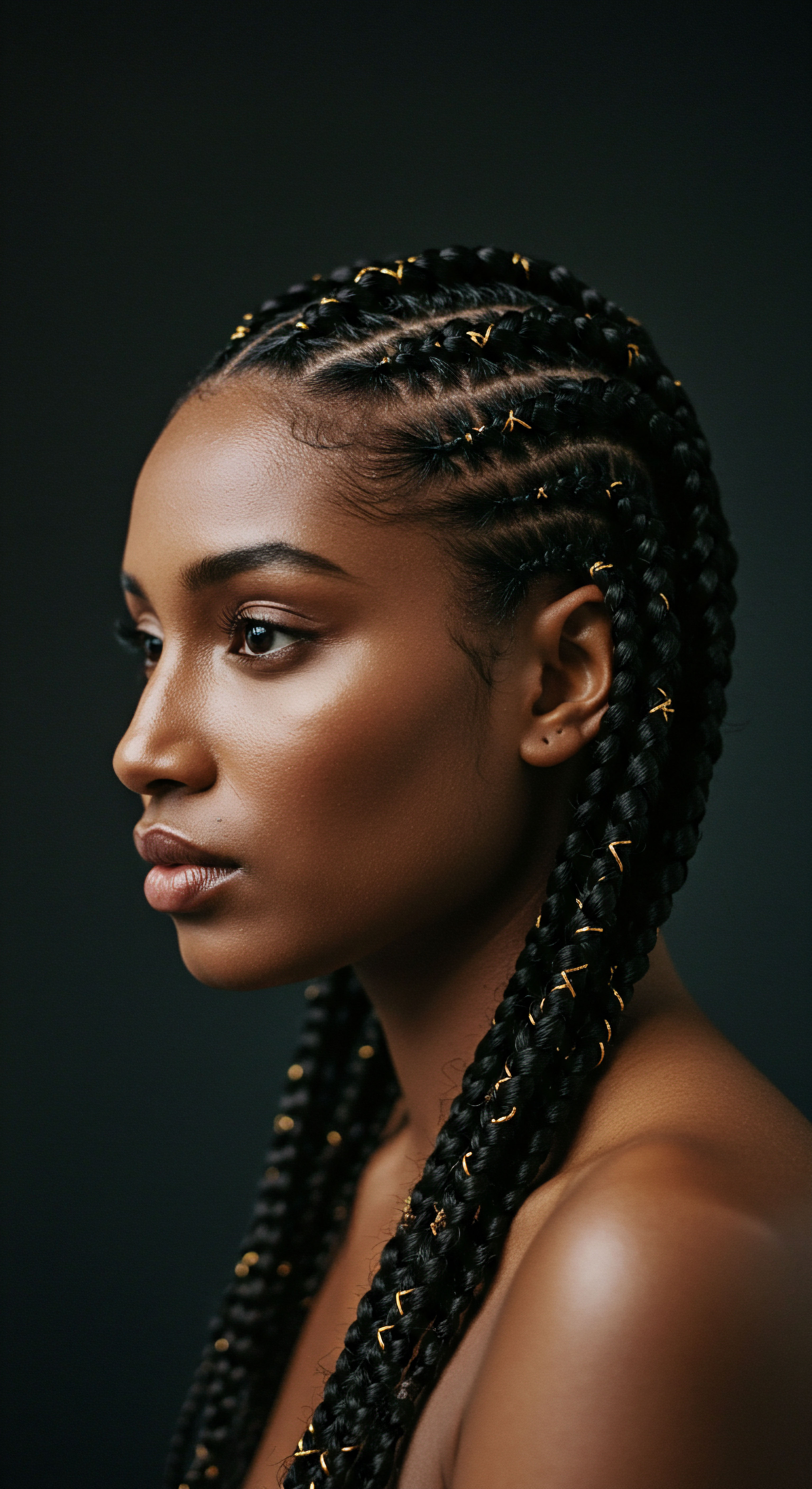
The Art of Hair Oiling
Hair oiling, a practice prevalent in many cultures, particularly in India through Ayurveda, stands as a testament to deep nourishment. This ritual involves massaging warm oils, often infused with herbs, into the scalp and along the hair shaft.
The benefits extend beyond simple moisturization. Scalp massages stimulate blood circulation, ensuring that hair follicles receive vital nutrients and oxygen. This enhanced circulation supports hair growth and can alleviate dryness and flakiness.
Beyond the physical, the act of oiling can be a moment of quiet reflection, a self-care practice that reduces stress and promotes mental calm. This connection between physical touch and mental well-being is a profound lesson from older customs.
| Oil Type Coconut Oil |
| Traditional Origin India (Ayurveda), various indigenous tribes |
| Hair Benefits Deep moisturization, protein loss prevention, scalp health, growth stimulation. |
| Oil Type Amla Oil |
| Traditional Origin India (Ayurveda) |
| Hair Benefits Strengthens follicles, promotes growth, adds shine, addresses premature graying. |
| Oil Type Bhringraj Oil |
| Traditional Origin India (Ayurveda) |
| Hair Benefits Invigorates growth, combats hair loss, soothes scalp irritation. |
| Oil Type Olive Oil |
| Traditional Origin Ancient Greece and Rome, Mediterranean cultures |
| Hair Benefits Conditions, adds shine, nourishes scalp, prevents dryness. |
| Oil Type Argan Oil |
| Traditional Origin Morocco |
| Hair Benefits Moisturizes, reduces frizz, adds shine, rich in fatty acids and vitamins. |
| Oil Type These oils, revered for centuries, offer time-tested nourishment for hair. |

Heat Styling and Gentle Approaches
Modern hair care often involves heat styling, which, while offering versatility, can also lead to damage if not approached with caution. Traditional methods, by contrast, largely relied on air drying and natural setting techniques. This gentle approach minimized the risk of heat-induced dryness, breakage, and weakening of the hair shaft.
The lesson here is one of patience and preservation. While contemporary life may demand quicker styling, integrating periods of heat-free styling, or using heat protectants and lower temperatures, reflects the ancestral wisdom of protecting hair from harsh elements.
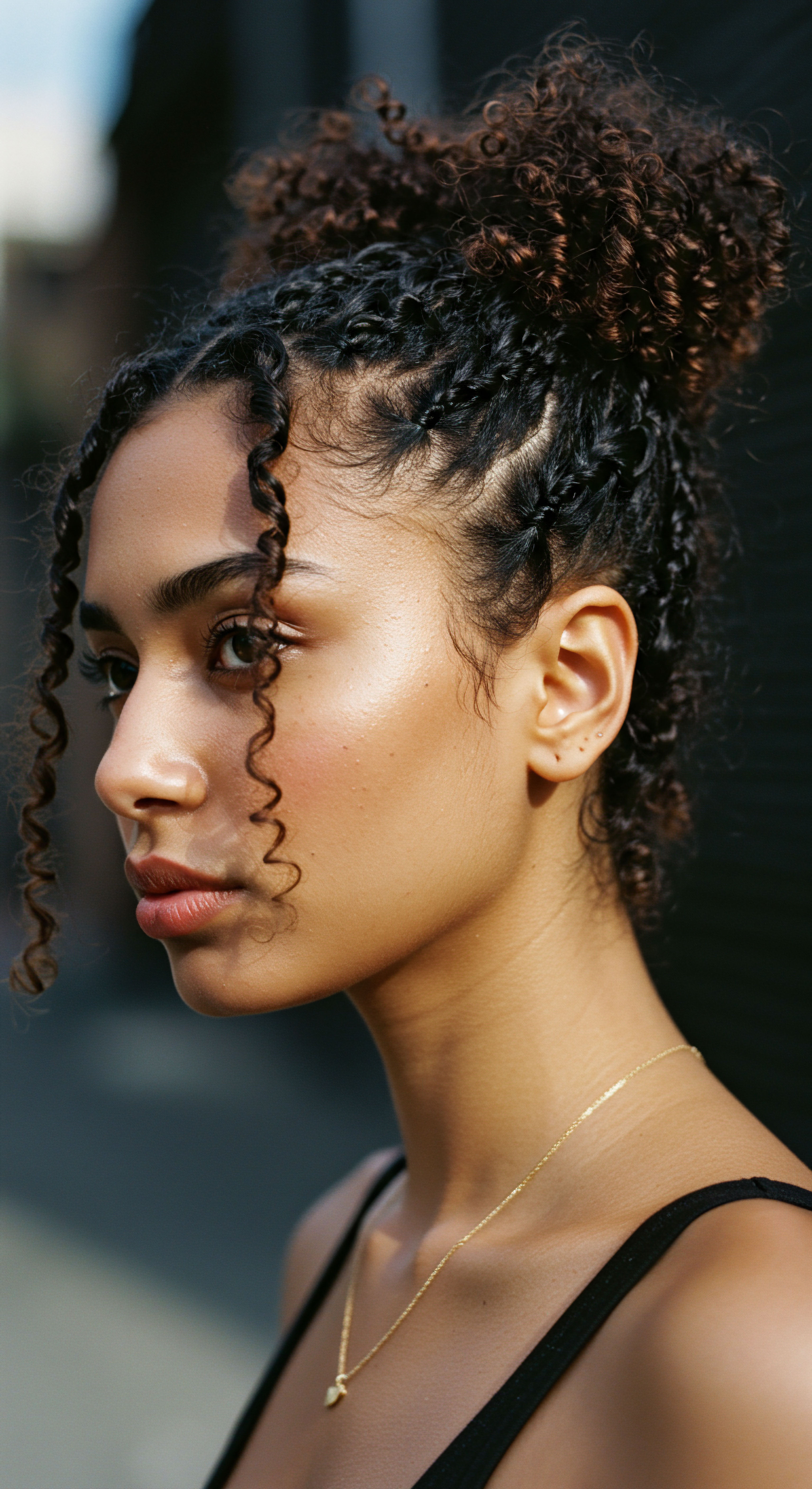
The Complete Hair Toolkit
The tools of traditional hair care were often simple, yet highly effective. Wide-toothed combs, natural bristle brushes, and soft cloths were preferred over harsh implements. These choices minimized snagging, breakage, and cuticle damage.
Today, a mindful toolkit for textured hair might include:
- Wide-Toothed Combs ❉ Ideal for detangling wet hair, preventing breakage.
- Satin or Silk Scarves and Bonnets ❉ Crucial for nighttime protection, reducing friction against pillows and preserving moisture and style.
- Microfiber Towels or Old T-Shirts ❉ Gentle alternatives to terrycloth towels, which can rough up the cuticle and promote frizz.
The principle remains ❉ use tools that respect the hair’s delicate structure, supporting its natural integrity rather than compromising it.
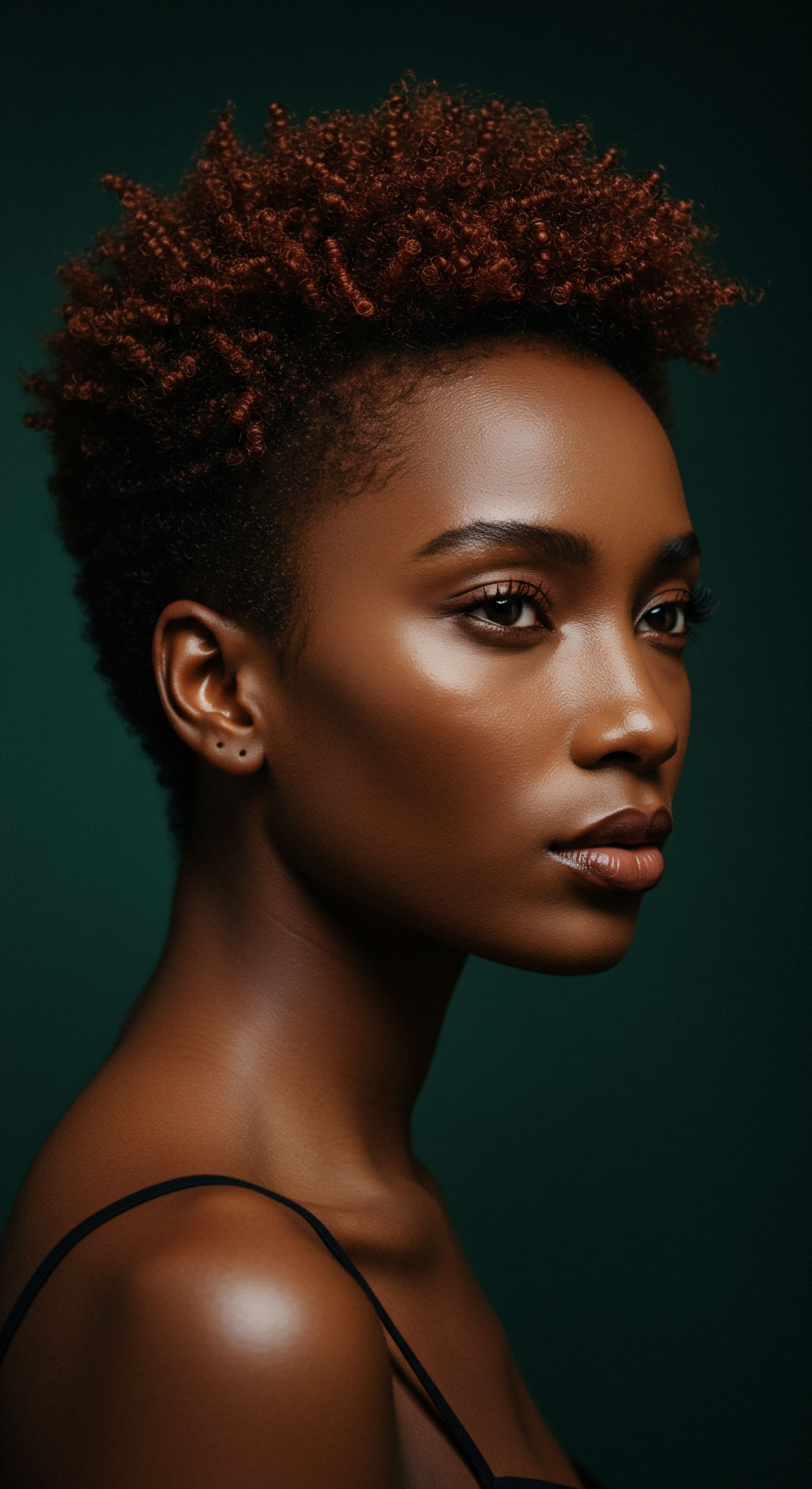
Relay
The deepest insights often lie where disparate fields intersect, where the whispers of ancient practice meet the precise language of modern science. How can the profound, interconnected wisdom of traditional hair care truly reshape our contemporary health approaches, moving beyond surface-level adaptations to influence our overall well-being and relationship with the world? This section delves into the subtle yet powerful connections between hair health and broader physiological, psychological, and even ecological systems, revealing how ancestral practices offer a potent guide for a more balanced existence.
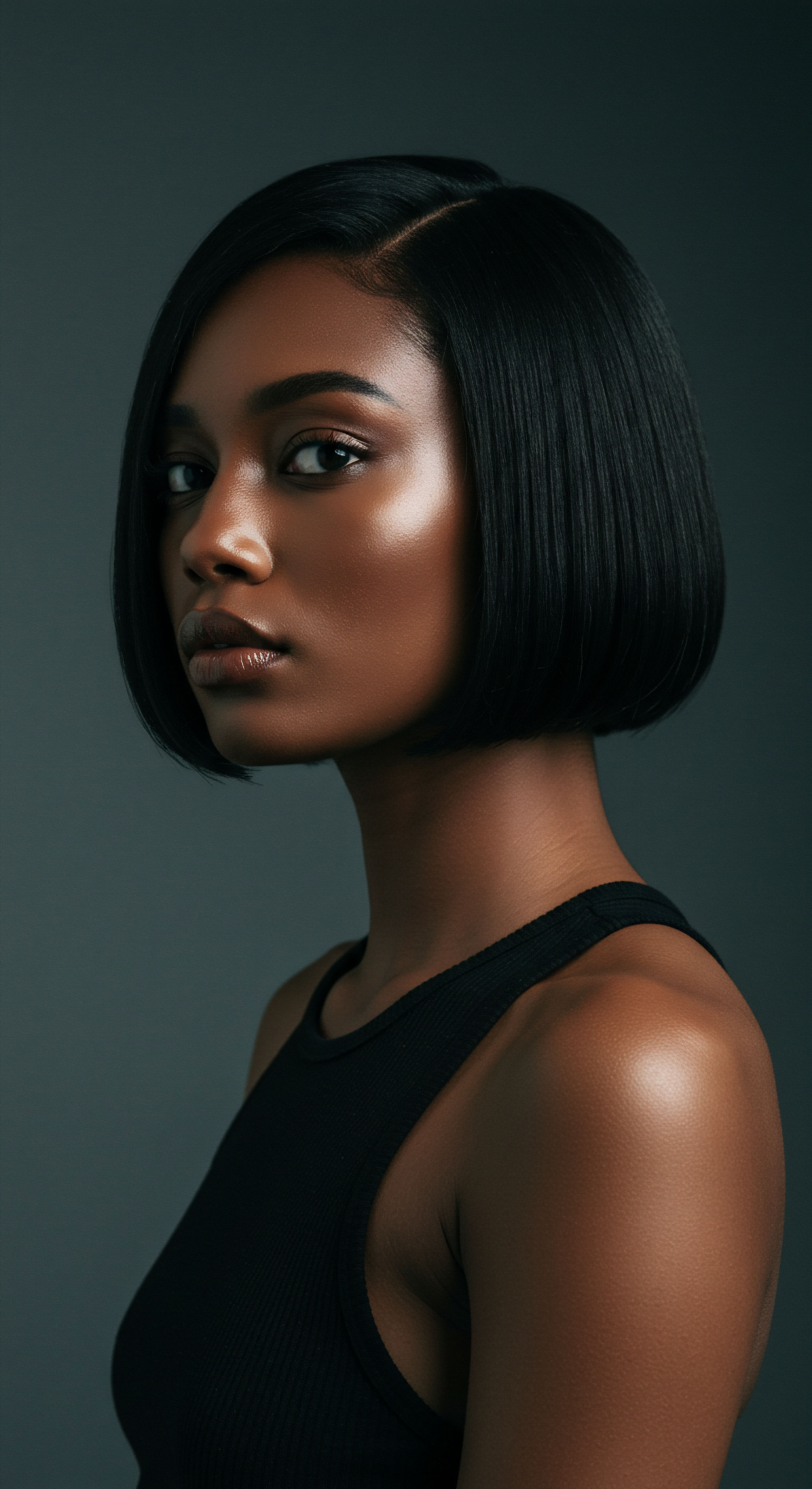
Holistic Influences on Hair Health
Traditional health systems, such as Ayurveda and Traditional Chinese Medicine (TCM), consistently assert that hair health is an external manifestation of internal well-being. This perspective stands in contrast to a purely cosmetic view, where hair issues are treated in isolation.
In Ayurveda, hair is considered a byproduct of bone tissue, linking its vitality to the strength of our skeletal system, nervous system, and gut health. Imbalances in the body’s doshas—Vata, Pitta, and Kapha—are believed to influence hair characteristics and concerns. For instance, a Pitta imbalance might correlate with premature graying or thinning, while a Vata imbalance could manifest as dry, brittle strands. This suggests that addressing digestive health, stress levels, and diet directly influences hair condition.
Similarly, TCM views hair as a reflection of blood health and the balance of Qi (vital energy). Hair loss or premature graying can be seen as indicators of imbalances in organs like the kidneys and liver, which are responsible for nourishing the blood. Thus, traditional remedies for hair often involve herbs and practices aimed at harmonizing internal systems, not just topical applications.
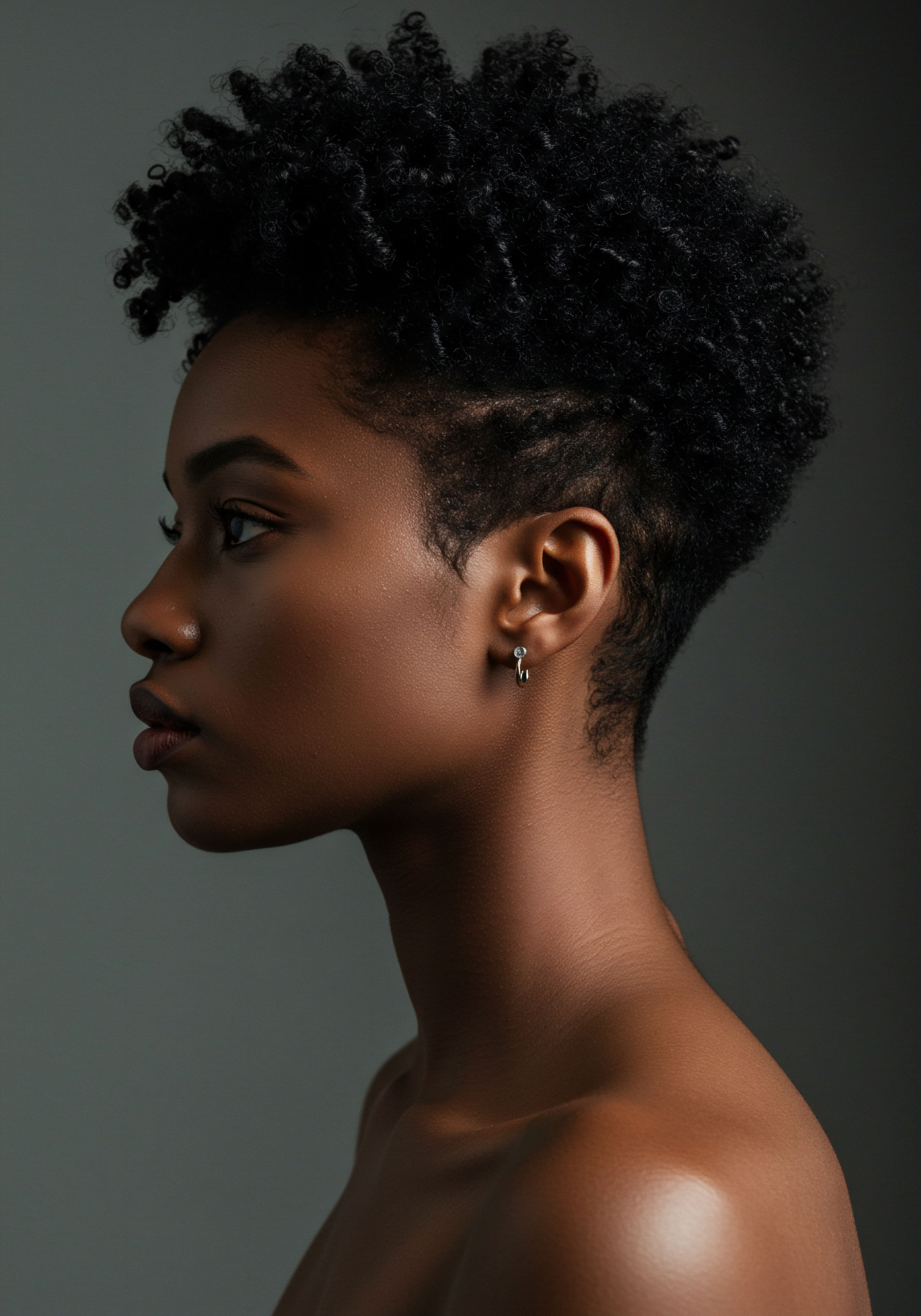
Can Mindful Hair Rituals Mitigate Physiological Stress Responses?
A particularly compelling intersection appears in the realm of stress reduction. Contemporary health research increasingly highlights the detrimental effects of chronic stress on the body, including its direct impact on hair health, often leading to conditions like telogen effluvium (hair shedding). Traditional hair care, with its emphasis on regular, gentle practices, often served as a built-in stress management system.
Consider the ancient practice of scalp massage, a cornerstone of Ayurvedic and Chinese hair care. Beyond stimulating blood circulation to hair follicles, these massages promote deep relaxation, reducing cortisol levels—the body’s primary stress hormone. A study on the effects of scalp massage found it could significantly lower levels of stress hormones and blood pressure, concurrently improving mood. This physiological response suggests that the very act of engaging in a mindful hair ritual can actively counteract the body’s stress response, thereby indirectly supporting hair retention and overall well-being.
This is not merely anecdotal. The parasympathetic nervous system, responsible for rest and digest functions, becomes activated during such calming activities. This shift from a “fight or flight” state allows the body to dedicate resources to repair and regeneration, including cellular processes that support healthy hair growth. The rhythmic, gentle motions, combined with aromatic oils, create a sensory experience that grounds the individual, pulling attention away from external pressures and inward towards a state of calm.

Ingredient Intelligence
Traditional hair care often relied on locally sourced, natural ingredients, a practice that carries significant implications for contemporary health and environmental well-being. Modern commercial products frequently contain synthetic chemicals, such as sulfates and parabens, which can strip hair of its natural oils and pose environmental concerns when washed down drains, potentially harming aquatic life and ecosystems.
Conversely, ingredients prominent in older traditions—like yucca root, aloe vera, shea butter, amla, and various herbal infusions—are often biodegradable and less likely to cause ecological harm.
The selection of these ingredients was not arbitrary; it was based on centuries of empirical observation and a deep connection to the land. For instance, the use of tea bran water by the Red Yao women in China, a residue from camellia fruit, offers natural cleansing properties without harsh chemicals. This inherent sustainability in traditional practices provides a critical model for developing contemporary hair care that respects both personal health and planetary health.

How Do Ancient Dietary Practices Influence Modern Hair Health Science?
The connection between diet and hair health is a cornerstone of traditional health systems. Ancient Indian and Chinese medicine, for example, placed immense importance on nutrition as a direct contributor to hair vitality.
Ayurveda advocates for a diet balanced according to individual doshas, rich in fresh fruits, vegetables, nuts, and seeds to supply essential vitamins, minerals, and antioxidants. Leafy greens, high in iron and zinc, are highlighted for hair strength, while nuts and seeds offer vital fatty acids for sheen.
Similarly, TCM advises foods that nourish the blood, such as dark green leafy vegetables, seaweeds, and legumes, to promote healthy hair. The focus is on providing the internal building blocks necessary for hair growth and resilience. Modern nutritional science confirms these traditional insights, recognizing the critical role of vitamins (A, B, C, D, E, K), minerals (iron, zinc), and proteins in maintaining healthy hair. A diet deficient in these elements can lead to thinning, breakage, or dullness.
This convergence of ancient wisdom and contemporary scientific understanding presents a powerful argument for integrating dietary considerations into any holistic hair care regimen.

The Community and Identity Aspect
Beyond the physical and internal, traditional hair care often held profound social and cultural significance. Hair styling was frequently a communal activity, a time for bonding, storytelling, and the transmission of knowledge across generations.
For many textured hair communities, these shared rituals provided spaces for affirmation, identity building, and collective well-being. The act of braiding a child’s hair, for instance, could be a moment of intimate connection, imparting cultural values alongside practical skills. This communal aspect offers a powerful counterpoint to the often individualistic and consumer-driven nature of modern beauty routines.
The psychological benefits of such shared experiences—reduced feelings of isolation, strengthened social ties, and a sense of belonging—are increasingly recognized as components of overall health. While not directly a hair care practice, understanding this broader context suggests that contemporary approaches might benefit from encouraging community-oriented self-care, perhaps through shared learning spaces or communal styling events, to support mental and emotional well-being.
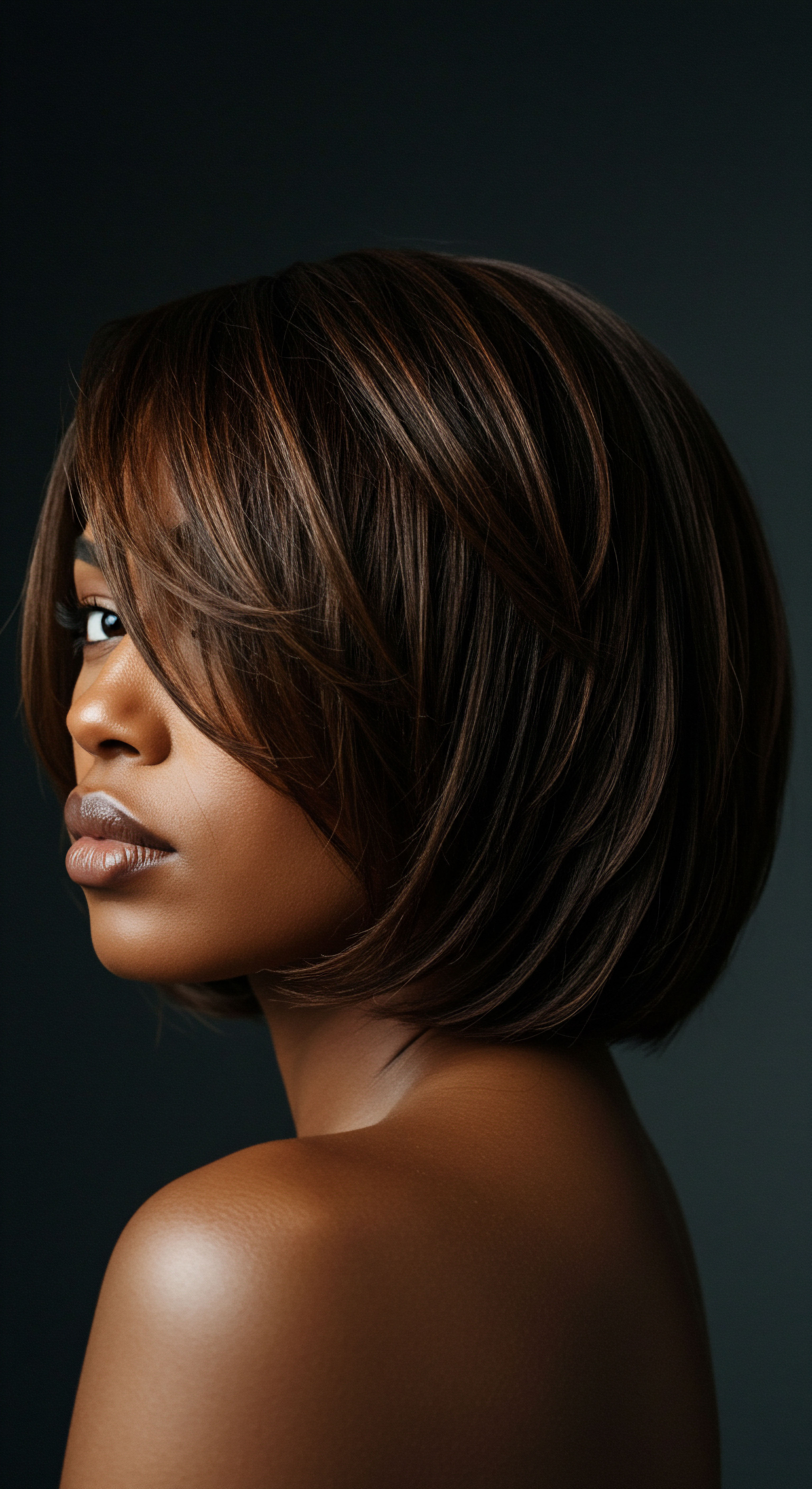
Reflection
The journey through traditional hair care practices reveals a profound truth ❉ our hair is not separate from us, nor from the world around us. It stands as a vibrant testament to heritage, a delicate indicator of our inner state, and a connection to the very earth that sustains us. As we navigate the complexities of contemporary life, the gentle wisdom of our ancestors offers a compass. It invites us to pause, to listen to the whispers of our strands, and to recognize that true radiance extends beyond the surface.
By honoring these older ways—the patient touch, the nourishing ingredients, the quiet moments of self-care—we begin to heal not just our hair, but perhaps, a deeper part of ourselves. The question of whether traditional hair care can inform modern health approaches finds its answer in this quiet, yet persistent, return to balance.

References
- A Comprehensive Guide to Ayurvedic Hair Care ❉ Benefits and Treating Hair Loss. (2024, March 7).
- Golden Locks ❉ Hair Care in the Renaissance Era – Living History. (2024, April 5).
- The Ancient Natural Ways of Hair Care Across Continents – 22 Ayur.
- Traditional Indigenous Haircare ❉ Ancient Wisdom for Modern Hair Concerns – Glamour Garden. (2023, December 11).
- What Is Textured Hair and How Do You Care for It? Here’s What You Need To Know.
- Reduce Stress for Hair Loss Without Medication – Psychologist in Chennai – Click2Pro.
- The Environmental Impact of Shampoo Conditioner Ingredients. (2024, April 27).
- The traditional Chinese medicine approach to hair health – Fusion Health. (2024, November 12).
- An Ayurvedic Guide to Healthy Hair – Banyan Botanicals. (2024, May 13).
- Benefits of Sleeping in a Bonnet ❉ Why You Should Do It – Amerisleep. (2024, October 4).
- The Environmental Impact Of Organic Hair Care – Natural Colour Works. (2023, November 26).
- Ayurvedic Hair Care ❉ A Comprehensive Approach to Healthy Hair – AyurVita – Myayurvita. (2024, May 24).
- The Ultimate Guide To Afro & Textured Hair Types 3a, 3b, 3c, 4a, 4b & 4c.
- Hair Care | Smithsonian Institution.
- Understanding the Environmental Impact of Your Hair Care Choices – Moo & Yoo.
- Understanding Ayurvedic Hair Care – Jaan Holistic Wellness & Head Spa. (2024, March 18).
- Traditional Indian Hair Care Regimens ❉ Timeless Wisdom for Modern Hair Care. (2023, September 29).
- How to Style Textured Hair – A Guide for Professionals | CLOUD NINE.
- Essential Hair Care Tips Inspired by Indian Traditions – The Earth Collective. (2023, October 6).
- Hair Care Secrets of the Past ❉ What Our Ancestors Used for Healthy Hai. (2024, August 19).
- 5 Chinese herbs that are best for hair growth – Times of India. (2025, April 11).
- Natural Hair Care ❉ Why It’s Better for Your Hair and the Environment – JanVei. (2025, April 22).
- Embrace Your Curls ❉ A Nighttime Ritual for Healthy and Defined Locks – Ashba Botanics. (2025, January 18).
- Discover the Ultimate Ayurvedic Hair Care Routine for Healthy, Lustrous Hair – Ayurveda for Healthy Hair – The Arya Vaidya Chikitsalayam and Research Institute. (2024, January 30).
- Embrace Wellness Integration for Holistic Hair Care.
- Eco-Friendly Hair Care ❉ How Your Choices Impact the Planet. (2024, June 22).
- Dos and Don’ts for Styling Naturally Textured Hair | Noma Sana. (2024, November 21).
- Indian Beginnings of the Shampoo – ScienceIndiamag. (2025, January 14).
- Advancing the future of textured hair solutions | Croda Beauty. (2025, March 26).
- Textured vs. Layered Hair ❉ What’s the Difference? – SALONORY Studio. (2023, October 2).
- Curly Hair Ritual – A Nighttime Routine – Jessicurl UK Retail. (2024, October 18).
- Understanding Natural Hair Texture and Curl Types – L’Oréal Paris. (2023, May 22).
- The Ancient Roots of Chinese Hair Care ❉ Traditions and Techniques. (2024, April 19).
- Hair Typing Systems – Earthtones Naturals. (2015, February 12).
- Embrace the Beauty Sleep Ritual ❉ A Guide to Heatless Hair Curlers and Sleeping Bonnets. (2024, February 7).
- Haircare Rituals Around the World ❉ Exploring Global Traditions | Orlando Pita Play. (2023, November 17).
- A History of Haircare | Amazingy Magazine. (2024, July 10).
- TCM Hair Loss Treatment | Most Effective Male & Female Hair Loss Treatment in Singapore.
- Rediscovering Historical Hair Care Practices – Fabulive.
- Secrets of Miao Traditional Hair Care Tips. (2023, May 24).
- Your 4 Step Hair Routine for the Best Overnight Heatless Curls – The Silk Collection. (2024, December 31).
- How Stress & Diet Affect Hair Growth – Beijing 101. (2025, May 13).
- PsychoHairapy ❉ A Ritual of Healing Through Hair – Psych Central. (2022, February 21).
- The LOIS Hair Typing System (Video and Pictures) – LaToya Ebony. (2020, May 26).
- Natural alternatives from your garden for hair care ❉ Revisiting the benefits of tropical herbs.
- Bridging gaps and cultivating care ❉ a call for culturally competent dermatological education for ethnic hair – PMC – PubMed Central. (2025, January 16).